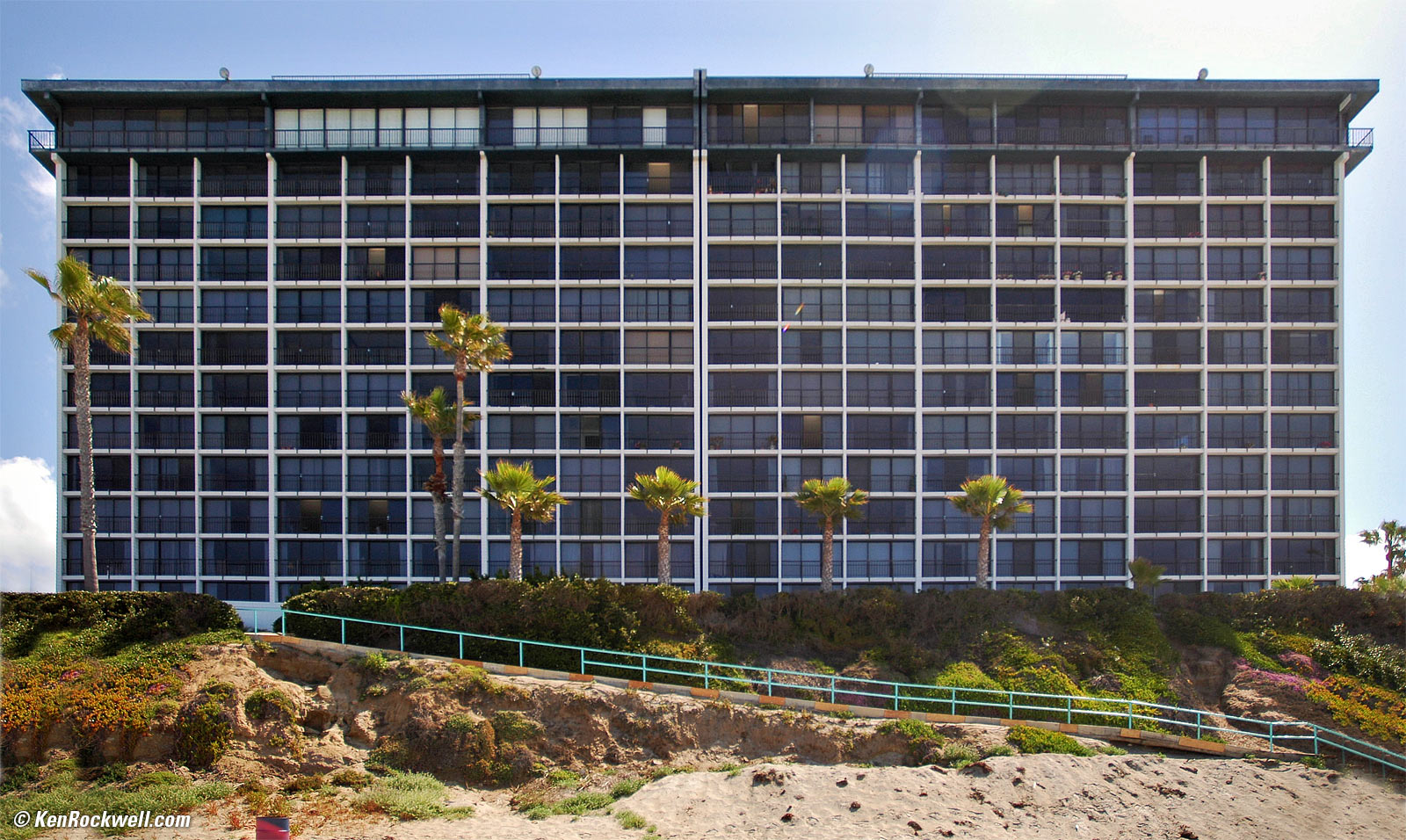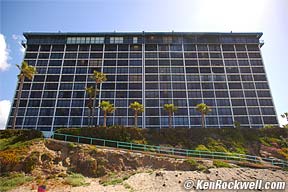Home Search Gallery How-To Books Links Workshops About Contact
Correcting
Perspective in Photoshop
© 2005
KenRockwell.com

Corrected for perspective.
|
Original image. INTRODUCTION We usually want rectangular objects to look like rectangles. If your camera is not perfectly parallel to the subject you will get trapezoids with weird angles instead. I had my camera pointed up to include the whole building. This made it look like it's falling over backwards. Complex large-format cameras and exotic perspective control (PC) and tilt-and-shift (TS) lenses used to be needed to correct this. It's trivial to correct in Photoshop CS2. It's a little tougher in earlier versions. It works with any image, digital or film. Photoshop CS2 In Photoshop CS2 use the Lens Distortion Correction filter by selecting FILTER > DISTORT > LENS CORRECTION. You get a big new window with a preview and control sliders. In the Transform box (towards the bottom) just move the Vertical Perspective and Horizontal Perspective sliders until your image looks great. For this image I simply slid the Vertical Perspective slider until it looked right, which was at -54. Versions before Photoshop CS2: Use the Crop tool (just press "C") and select most of the image. You will lose some of the sides of the image in this process. After you've clicked, dragged and released the Crop tool you'll notice a new option to click along the top bar on your screen called Perspective. I overlooked this for years, since it only pops up after you've made your crop selection and disappears after you've hit "Return" to make the crop. Check "Perspective" and now move the edges of the crop box to follow the lines you want to have parallel in the final image. Once you've done this just hit "Return" and lo and behold, a corrected image! This image here had all the lines angled in towards the top on my film since I had to point the camera up, and after this trick they are all vertical as if I had lugged my view camera to France. All Versions You won't always have enough picture left on one side or top or bottom after the tool stretches and squeezes your image. By stretching the top and squeezing the bottom I had an image that was fatter on the top and skinnier on the bottom. I had to clone some of the bottom back into the blank areas that were createdby the squeeze. An observant eye will notice that there is more fence going off to the right in the corrected image than there is in the original image. I wound up with more sky than I needed and too little dirt at the bottom. Of course I cropped it neatly in the example you see above. |

